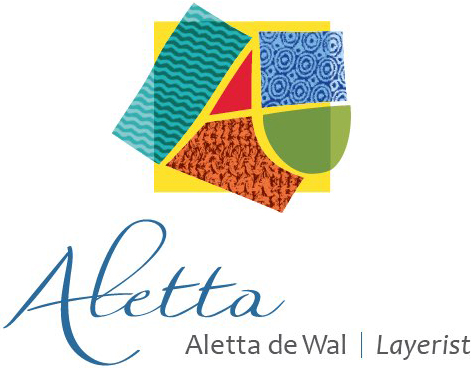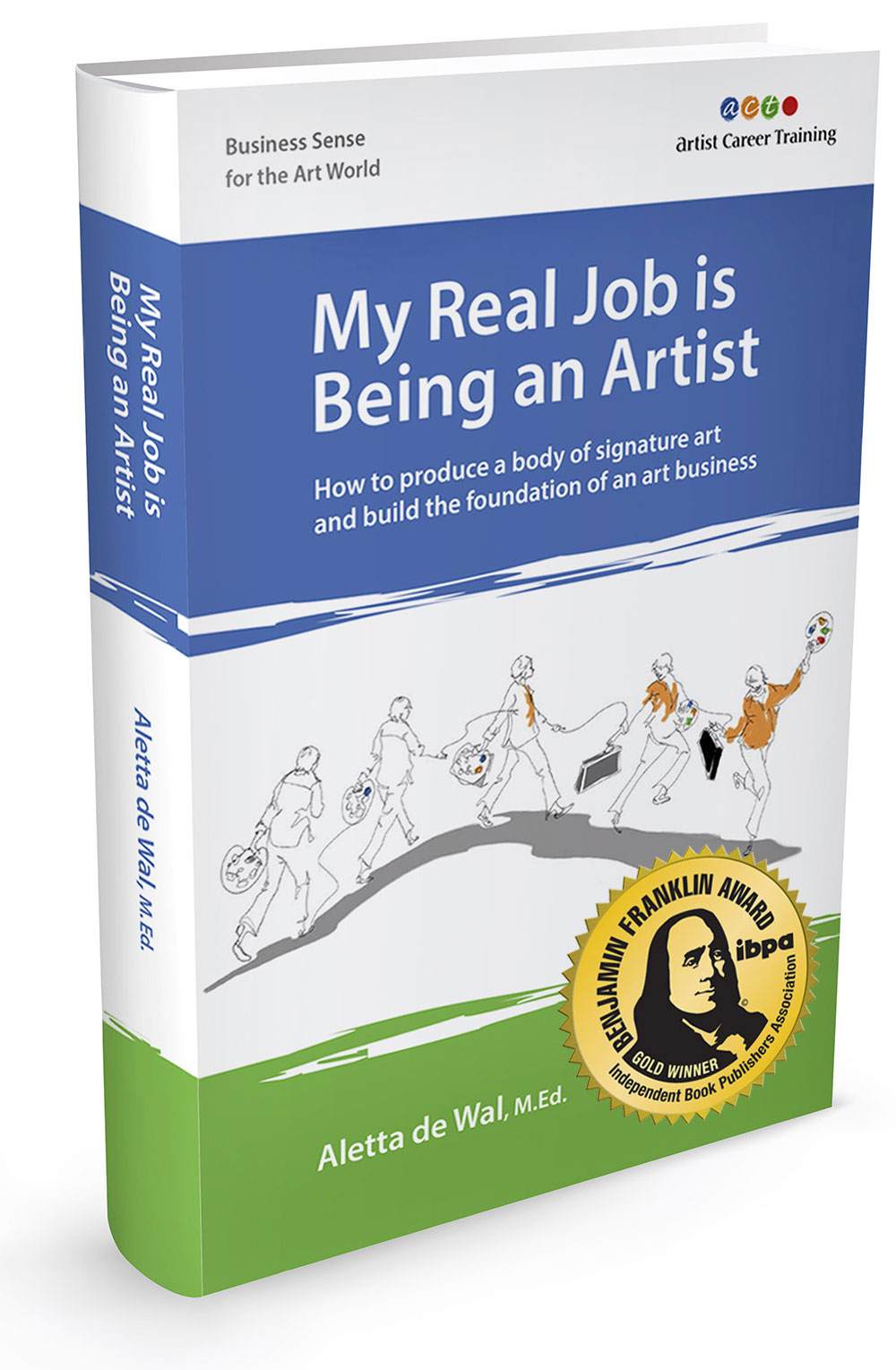James Thatcher: From Cabinetmaker to Abstract Artist
Evolution of an Art Career
Estimated Reading time: About 15 minutes
Tired of reading? You can listen to the Tip-of- the-Week! ![]()
For about 25 years James Thatcher was a cabinetmaker. It’s a world of minute detail: blueprints, trim, and tight spaces and delicate finishes: matching color samples and pristine installations.
Creating large scale abstract art was a way of taking a break from the fastidiousness of his vocation. Throwing, splashing, thrashing, and dripping fields of paint became a refuge from the demands of the industry.
Born and raised in rural Michigan, James Thatcher has lived in many parts of the United Sates. When life circumstances led to a break from cabinet making, he spent several seasons remodeling and finishing his parent’s home in Michigan’s Upper Peninsula. As his bride’s career in higher education took them to the mountains of North Carolina James found himself back in the field of high-end interior woodworking.

James Thatcher. From cabinetmaker to abstract artist.
Photo credit: © Deb Thatcher
http://www.jamesthatcheroriginals.com
After several years of carpentry and drywall, he felt poorly suited to the demands of cabinet making. He’d lost his edge.
It took a few years to sharpen up – years marked with frustration and dissatisfaction. Because of the real estate collapse of 2008 he was laid off. He kept his tools but hasn’t returned to cabinet making. Instead, his wife Deb’s career has gone forward giving James the opportunity to pursue his art career in full flight.
James has exhibited his artwork in one person shows throughout the mid-Atlantic and upper Midwestern states, including the Washington Project for the Arts (Botswana Club) in Washington, DC, and the Bay City Art Center, Bay City, Michigan.
His works have also been shown in group exhibitions in museums and galleries, including the Fine Arts Academy in Budapest, Hungary, the Corcoran Gallery of Art in Washington, DC, the DeVos Museum of Fine Arts in Marquette, Michigan, and the Detroit Artists Market, Detroit, Michigan.
Bill Clinton, Paula Zahn, Deng Xiaoping, Helmut Kohl, Lady Bird Johnson, and Frank Perdue have pieces of James’ woodwork in their private collections.
James was educated in Washington, DC at the Corcoran College of Art and Design (Fine Arts Diploma, 1984); where he studied with Robert Stackhouse and John Dickson.
A.C.T.: What prompted you to start your professional art career?
My parents ran The Boardwalk Art Gallery in Naples, Florida in the early 70’s. Professional artists now well known, like Peter Parnall, Wayne Cooper and JoAnne Wank, stayed with us during their one-person shows at the gallery. They often painted during their stay with us and that was very inspiring. It was obvious that art could be a profession.
Professionalism is really important to me. I’ve lost patience with bohemia and its participants. I remember a quote along the lines of “Would you want to do business with this person?” and find it an excellent filter.
A.C.T.: What is your “life’s work” as an artist, and what legacy do you want to leave?

My artistic direction has changed dramatically this past year. I have this excellent tagline, “Large Scale Abstract Art;” which is really catchy and generates good conversation. But a number of moments in the studio have moved me from a signature Abstract Expressionist style into Minimalism.
I’m so pleased with the change—it really makes sense in light of my personal history, experience and skill set in cabinet making. I recently looked at an old sketchbook from the mid-late 1980’s (as I was beginning my career in custom cabinet making) and was thrilled to see drawings from 30 years ago, which are right in line with this current body of work.
I love the power of scale, but changing styles provided too many ideas to hold to large scale. And I discovered that a bunch of those ideas weren’t any good. I’ve switched to some more wieldy sizes for finished work, sometimes as small as 4”x 6”; but am now finding ideas worth expanding on, back to 48” x 72”, and sculptures up to 10’ tall.
I intend to leave a high-powered legacy of artworks that are treasured for generations. Do people realize that artworks are durable goods? Your children will treasure your collection and pass it on… so I’m creating well-made pieces that will be awesome for years, decades and generations to come. I have a background in drawing, drafting and art history so I’m not doing trendy work but have a classic-modernist aesthetic.
I’m also doing some experimental work with roofing felt which is designed to keep water out of your home for 30 to 50 years, but as a substrate for painting, it’s experimental.

A.C.T.: What is your business model and art business direction?
My business goals are very high. I want to make striking artwork, exhibit and sell in Chelsea galleries and museums in NYC and abroad. Great art is great art in NYC, Paris, Tokyo, anywhere.
However, with the change in styles I am fully involved in developing this current body of work. I’m right on the cusp of re-focusing my website and marketing that. I am creating proposals for public artworks locally and regionally. I am also preparing proposals for one-person exhibitions on college circuits as well as regional art centers for next year.
These days I refer people to my blog rather than my website because of the posts detailing my change in styles. I regularly post artwork and process photos on Facebook and Twitter. After a while I’ll write a blog post about the work. Then the finished pieces migrate to my web site.
Blogging really helps focus the events, thinking and influences in my studio work, which also helps in writing exhibit proposals. I don’t have huge followings but they are sincere contacts, so I enjoy regularly updating projects and have confidence in the feedback I receive.


James Thatcher Studio View © Grid Paintings
A.C.T.: Please describe how you manage your time, money and energy.
My wife is the primary breadwinner and handles our finances. That creates great liberty and I have seized the day to be an artist. I don’t get up real early right now, about 7:30 a.m. Coffee, prayer and morning devotions (I’m using Susan Young’s “Jesus Calling” right now) and I’m in my basement studio around 9:00 a.m. I turn on the lights and WMHT (public radio--classical music), feed my kitty and clean the litter, then assess where my current project is and set to work.
I’ll work until noon or 1:00 pm, then break for lunch. I do my first go around with social media at lunch, email first though. I’ve made a pact with myself - NO SOCIAL MEDIA IN THE MORNING! It creates a barrier and delays getting to work. (However, it is stimulating and effective to contact art consultants in the morning, as necessary.) Lunch is about 90 minutes, then back to work until 5-6 pm. Then I switch mediums and become the cook of the house.
I keep very aware of deadlines. I don’t enjoy last minute rushes and make every effort to complete submissions, proposals and projects well before their due date. That makes everybody’s life easier.
I often write or do other computer work in the evenings, as well as another go-round with social media. I shoot photos every 10 days or so, unless I think my current process or studio view makes a good Facebook post.
I keep receipts, travel and business expenses for my artwork mercilessly.
Even while living the dream it is easy to burn out, so during warm months I go fishing a few times a week, as weather dictates.
In the winter I really dig in. I’m a hibernator. I don’t look for much diversion. It’s very similar to being in art school again (Corcoran College of Art + Design, Washington, DC, 1984), although my imagery, process and practice are more meditative now.
We go to NYC and other metropolitan centers a few times a year, which is terribly stimulating, and have a regular social calendar, which keeps me wanting to get back into the studio.

A.C.T.: What peak moments have you had as an artist?
- I just successfully completed a crowd funding campaign for a mural in Maryland, and then produced and installed that work - a process that took well over two years.
- Doing graffiti during art school in the ‘80’s was strong, and is reflected in creating public works, as well as large-scale studio art.
- Becoming a cabinetmaker after art school was very gratifying and practical … but very demanding and ultimately something to get over. Being laid off was tough but also such a blessing. I seized the opportunity for a life change.
- Seeing the television artist Nam June Paik’s retrospective at MOMA in the early 80’s was a real mind blower. He painted the walls black.
- Also seeing Judy Pfaff’s installation of Day-Glo paint on the walls, “Atlantic Kabuki” during the Hirschhorn Museum’s 1980 biennial, in Washington, DC. The way they approached these hallowed spaces and changed them for their work was powerful.
- Recently, experiencing the Dia Beacon facility’s dramatic minimalist art collection has been profound.
- The most life-changing event was selling a large painting to a gentleman in 1978. He invited me to stay with his family in Washington, DC in 1980. I ended up staying in town for almost a decade, going to the Corcoran School of Art - which changed EVERYTHING.
A.C.T.: How do you define success and how do you celebrate it?
That’s evolving. I used to demand great artwork from myself—stuff that other artists would be impressed with. Now I need to exhibit. I have the confidence that I’m going to create successfully and want to display my work publicly; either in business locations (lobbies, conference rooms, or offices), galleries or art centers.
Celebration is a phone call to my Mom, dinner with my wife … I know one person who made over $1,000 in sales and drank themselves into the hospital … I use that as an object lesson. You can be self-destructive in the face of success—don’t do that! Keep building!
A.C.T.: What obstacles have you encountered in your art business and how have you handled them?
Moving has been very difficult in my life, and career.
My parents' gallery was in Naples Florida in the winter, but in the summer when everybody left, we did too and moved to Northern Michigan. Big differences in those cultures. And the moves created difficulties.
We’ve moved regularly as my wife’s job has dictated and her career has escalated. We’ve been moving every five years because that’s what life in higher Ed entails. That’s been tough for my career. I’ve found that it takes me a couple of years to acclimate to a new region, culturally and aesthetically.
I have found myself between studios for long periods of time, sometimes years, which is very hard. It’s hard, but I don’t stop. During that time I shift to exhibit proposals and conceptual art, small works, journaling/sketchbooks, and computer art to keep the creative juices flowing.
Relocating has made it hard to build a regional fan base and has forced me to re-start my art career several times. On the positive side, I believe it has caused me to deal with more essential subject matter and expressions, although I’ve struggled to maintain personal and business relationships from previous regions. Social media has really helped me get back in touch!
Also on the positive side, moving often has also caused me to become Mr. Congeniality. I’m good at making conversation and new friends, and assessing business opportunities.

A.C.T.: What opportunities has a professional approach to your career brought you that you might otherwise not have had?
Professional opportunities come to professional people. Writing articles, public speaking engagements, and serving on boards of directors are opportunities that have come my way through professionalism.
I believe a professional approach makes all the difference. This is all about presentation: what are you putting on social media? Do you realize that the whole world can see that? How are the pictures of your artwork? How are you dressed? Groomed? What are you saying? Would you want to do business with the person that you are presenting?
I feel like I’m talking to who I was in art school when I say these things ….
It really isn’t about your art - it’s about you. People deal with you before they deal with your art. If you’re unprofessional you will find it hard to do business. Talent is no excuse for poor behavior. The days of Jackson Pollock urinating in Peggy Guggenheim’s fireplace are over.
Get a haircut, get some business attire, take some notes, and learn to write a press release, learn how to listen so you can ask pertinent questions, do a business plan. Stop cursing and using slang; be articulate, expressive and clear without it.
We have to realize that we are manufacturers as well as advertisers. We are entrepreneurs so do a business plan. Learn how much it takes to run your art business and live your life – pay your rent and keep your home, pay your studio rent and keep your studio, buy a car and run the car, put food on the table…. And, by the way, when you have those numbers in front of you, that creates the perfect rationale for your prices.
Present yourself well ... it will pay off in many different ways.
A.C.T.: Who are your role models and mentors? What was the best advice they gave you?
Richard K. Thomas, who bought a painting and brought me to Washington, DC.
We were having a glass of wine in my parent’s gallery and he asked me “Jimmy what do you plan to do with your life?” I said “I don’t know” and he invited me to come stay with his family. He was Chief Economic Correspondent at Newsweek magazine for 40 years and has an amazing perspective on politics and the economy. He told me, “Jimmy, the U.S. is like any other other country: 10% of the people have 90% of the money. What makes the United States different is that the people with 10% of the money can actually change. ” There’s great hope and strength in that understanding. It’s not a feudal society or aristocracy. Capitalism and the motivation to do better is possible. Think of Bill Gates and Steve Jobs – from the garage to the top 10%. Blockbuster Video is the opposite example.
I’ve also had brilliant pastor/teachers who relied on God and demonstrated His faithfulness. That has changed the way I look at myself and the way I think (very important). Thinking leads to emotions, emotions lead to actions. The life we lead affects all the others around us.

A.C.T.: What is your art marketing strategy?
- As spouse of a college president, I am privileged to meet people and go places others cannot. That’s helped me find my audience.
- Be ready. Have a body of artwork that you have absolute confidence in. Don’t do marketing without that because otherwise you don’t really have anything to market.
- Have your portfolio tweaked and ready to submit, now.
- Don’t waste anyone’s time: Know what you do and why. Realize when people are interested, and when they’re not.
- Don’t dominate the conversation. Ask pertinent questions.
A.C.T.: What promotional materials and actions do you use most often?
- My portfolio, resume, and artist’s statement are the most requested items for the venues and opportunities I pursue.
- I always have business cards with me and distribute them.
- And I always have a current project to discuss, clearly and concisely.
- Literal mailing lists are less critical these days than my email list. Essentially all of my email contacts qualify for my mailing list. I don’t know the exact number, and I don’t have specific pre-determined lists, although I pick and choose from them depending on the content of my release. When I have an assistant sometime in the future, they’ll have superior computer skills. Meantime, I still get the job done.

A.C.T.: We met through Google+ . How do you incorporate social networks into your art marketing?
One of my cabinet making experiences was commercial exhibits where I did trade shows. The philosophy was not to make sales but to disperse information, and then making contacts, following up with them and making sales. I think of social marketing on the same way – revealing my process, showing my work, talking about content and sharing.
It’s a little like fishing – having good bait and a good spot. The Internet is the good spot. The bait is your content, subject mater and point of view, techniques, opinion, yourself. You’re the bait.
When I’m hitting it hard (such as Christmas or Valentine’s Day) I’ll post images daily with prices for originals and prints on Facebook and Google + and, of course, on my web site. (If you want to sell it, put a price on it.) Twitter seems to resent that sort of approach. Pinterest is probably perfect but I am already spread thin enough on social media. I should probably drop LinkedIn and start Pinterest this year.
A.C.T.: How do you use your art to support causes you believe in?
I’ll do the Twitter Art Exhibit because it’s small, fun and creates a conversation piece on my resume.
The Sketchbook project from the library in Brooklyn is great and it offers an exhibit there.
Generally, if I know the person asking for a donation I cooperate.
There is an argument I’ve heard for donating artwork to specific situations because of who your work will be exposed to, and in what context. Especially if you are attending the event, the common cause can be a great bond.
But how about this? The public really needs to get ahold of the idea of purchasing artworks and then donating them to the cause for auction. This approach benefits the artist with the sale, the purchaser/donor benefits from a tax deduction for the donation, and the cause benefits from the monies received from the work’s sale. Everyone wins with that approach.
Another approach is the 50/50 auction and if you believe in the cause, you – the artist – can donate the money so the charity gets 100%.
A.C.T. How do you price your work? What is your art purchase policy?
Back in the late 80s I was the exhibit technician for a commercial gallery in Washington – I was the guy who hung the art works. I saw that small works were always priced at $200 - for about a square foot. Generally, I use $200 per square foot for Large Scale Abstract Art, plus crating and shipping. This puts my work at a level that isn’t cheap but isn’t that shocking either. It’s an effective pricing level for college professionals who are part of my art-buying crowd and who can afford to buy my work.
I offer interest free payment plans for items over $1,000. I get a deposit but I am trusting because there is usually a relationship there before we get to that point. I’ll say “I believe that you love this piece and that we’re entering into an agreement because of that and that you have the funds to pay for it. You want to have the art and I want to make the sale. Let’s do this.’
A.C.T.: What legal measures do you take to protect your work? Have you had to take legal action?
I use the standard copyright notice. I also have a collection of artwork registered with the U.S. Patent Office.
In the late 1990’s a company plagiarized a folding screen design that I marketed through furniture showrooms in Design Centers on the east coast – shopping malls for the interior design trade. I was invited to attend the International Contemporary Furniture Festival at Chicago’s Merchandise Mart and distributed my portfolio to some exhibitors.
A short time later I saw an advertisement in a major furnishings magazine—one of those showrooms was manufacturing designs based clearly on my work. It turns out that you can’t copyright a design for a “practical item,” only images displayed on those practical items. I wrote a strong letter of cease and desist, which was ignored.
A.C.T.: What advice would you pass on to artists who want to succeed in any economy?
In general, as Churchill said, NEVER, NEVER, NEVER, NEVER GIVE UP. You will not fail if you do not quit.
On a practical level, have multiple streams of income from your work. Offering giclées, notecards, and postcards is a perfect alternative to offering only originals; and they extend your imagery but require no investment on the artist’s part when using Print On Demand services.
Go to Chamber of Commerce receptions for member businesses and be creative about your listening. Be alert for different types of opportunities about how you as an artist can work with them: anything like graphic design, interior design, furniture design, or business-to-business art (such as creating artworks for a lobby or conference room that incorporate/illustrate products or designs from the businesses product line). It’s a great work of art but also relevant to their business. And they understand you as a business because they are entrepreneurs. Again, be ready!
Also, consider using crowd funding to finance some big ideas, a new series or new equipment. There are some “art only” crowd funding sites out there. It’s a lot of work but it can really motivate your fan base to support your ambitions. A lot of thanking, corresponding with people, follow up. It changes the relationship with your fans and a new point of view on marketing and income production.











